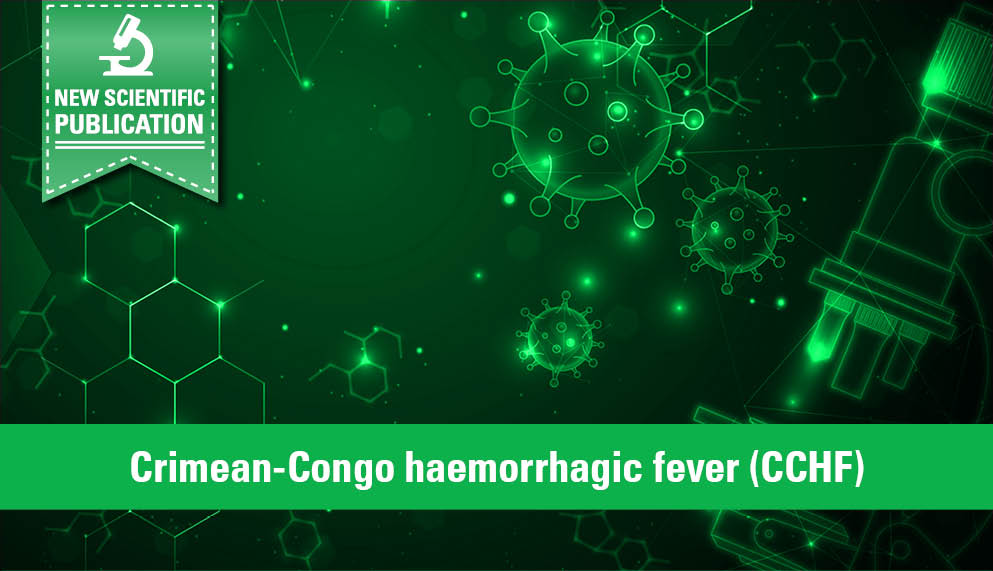EUROIMMUN ELISAs for detection of antibodies against Crimean-Congo haemorrhagic fever virus (CCHFV) reliably identify acute CCHF cases and are suitable for laboratories involved in on-site outbreak support. This was demonstrated in a recently published study in collaboration with scientists at a national reference laboratory in Turkey.
Crimean-Congo haemorrhagic fever (CCHF) is a life-threatening tick-borne disease which is included in the World Health Organisation priorities for research and product development. Since there is no CCHF vaccine available, management of outbreaks relies on rapid identification of cases and appropriate infection control measures. The endemic region of CCHFV encompasses countries in Africa, the Balkans, the Middle East and Asia that lie within the geographical habitat of the principal tick vector, namely ticks of the genus Hyalomma. Turkey has the highest number of laboratory-confirmed CCHF cases worldwide.
The EUROIMMUN ELISAs for detection of IgM and IgG antibodies against CCHFV are based on recombinant viral nucleoprotein. The N-protein is the major target of the immune response. N-specific IgM becomes detectable after a median of 2-3 days after onset of symptoms, followed by IgG 1-2 days later.
The diagnostic performance of the EUROIMMUN ELISAs was evaluated against established CE-marked tests. These were the EUROIMMUN CCHFV Mosaic 2 IgM and IgG indirect immunofluorescence assays (IFA), which served as reference tests, and IgM and IgG ELISAs from another manufacturer.
The EUROIMMUN Anti-CCHFV IgM and IgG ELISAs both yielded a higher sensitivity (IgM 98.0%, IgG 47.1%) than the other commercial ELISAs (IgM 95.9%, IgG 35.3%), as determined in 49 serum samples from patients with acute-phase CCHFV infection. The lower sensitivity of both IgG ELISAs compared to IFA may be due to differing antigen presentation between the two techniques and the study panel of acute-phase samples. The main value of IgG analysis is, however, in disease monitoring and epidemiological surveillance. The EUROIMMUN IgG ELISA has previously demonstrated a sensitivity of 98.8% in patients with subsided CCHF.
The specificity of the EUROIMMUN IgM ELISA was slightly higher (86.4%) than that of the other ELISA (84.7%), as evaluated in 89 sera from control patients, healthy blood donors and patients with hantavirus or sandfly fever infections. For IgG, both assays demonstrated a specificity of 100%.
The authors summarise that the ELISAs from the two manufacturers showed a substantial qualitative agreement and a very strong positive correlation of quantitative results for both IgM and IgG. The EUROIMMUN ELISAs are thus standardised and easy-to-use tools that reliably detect acute CCHFV cases. Since ELISAs are less complex than other serological methods, they are highly suitable for use in outbreak situations.
The EUROIMMUN Anti-CCHFV IgM and IgG ELISAs are now CE marked. The assays can be fully automated on ELISA processors such as the EUROLabWorkstation ELISA or the EUROIMMUN Analyzer I or I-2P.
Read more on the newly published study in the journal Vector-Borne and Zoonotic Diseases.
Cosgun Y. et al. Evaluation of nucleoprotein-based enzyme-linked immunosorbent assay for serodiagnosis of acute Crimean–Congo hemorrhagic fever virus infections in a Turkish population. Vector-Borne and Zoonotic Diseases. doi: 10.1089/vbz.2022.0026 (2023).
And check out our previous paper on anti-CCHFV antibody detection published in the journal PLOS Neglected Tropical Diseases.
Emmerich P. et al. Comparison of diagnostic performances of ten different immunoassays detecting anti-CCHFV IgM and IgG antibodies from acute to subsided phases of Crimean-Congo hemorrhagic fever. PLOS Neg Trop Dis. doi.org/10.1371/journal.pntd.0009280 (2021).

